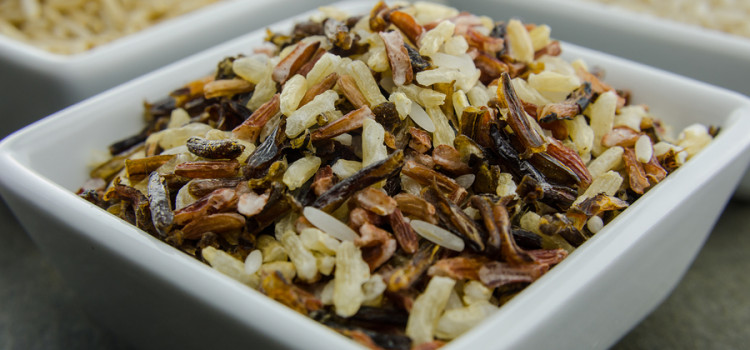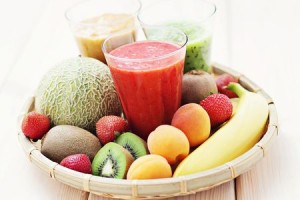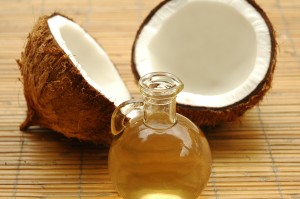Question: Is Rice Gluten-Free?
Answer: Yes!
But there are exceptions…
Shopping for Rice and Rice Products on a Gluten-Free Diet

Have you heard the good news? Rice, international staple and dynamic side dish for any occasion, is inherently gluten-free. That means that whether you’re living with celiac disease or NCGS (non-celiac gluten sensitivity), rice can still be your go-to food when looking for something to pair with the main course.
Partly, this is just because of what rice is. Unlike grains such as wheat and rye, rice doesn’t contain any gluten on its own. It’s very rarely used as an ingredient in baking (unless we’re talking gluten-free rice flour), so rice has no need for the gluten bonds that allow doughs to stick together and maintain their shape and structure. Rice is gluten-free for the very reason we all love it: it’s a simple, come-as-you-are grain, available to complement dishes from around the world with just the slightest intervention.
We also have the nature of the rice marketplace to thank. Unlike many other food products, rice is rarely processed in the same facilities that process gluten-containing foods. That means your chances of cross-contamination go way down, and you can trust that your rice is gluten-free.
…That is, except on those rare occasions when you can’t. Here, we look at the varieties and brands of rice that should stay on your gluten-free shopping list. And those that you might want to steer clear of!
Scope Out the Sauces
The easiest rule for gluten-free rice shopping is to just say no to sauce. The biggest offender here is soy sauce (often contains gluten!), but soy sauce itself is the base of many other sauces such as teriyaki (also a frequent source of gluten!). While gluten-free soy and teriyaki sauces are certainly available in stores, be wary of any rice that comes with sauce and doesn’t specify that it’s gluten-free.
Skip the Flavored Mixes
All varieties of natural rice (meaning, pre-additives) are gluten-free, so you really do have some interesting flavors to work with. Start with any variety of rice—red rice, brown rice, black rice, etc.—and then experiment with your favorite gluten-free recipes to create homemade sauces and mixes that are delicious and gluten-free. This will get easier over time, but while you’re still getting used to making it work at home there’s one more thing to be careful about: store-bought mixes.
Store-bought rice mixes seem like a great idea. They package exotic, flavor-filled rice mixes in easy-to-prepare bags. Some of them are even microwaveable. But when you suffer a negative reaction to their hidden gluten, you’ll wish you’d gone the homemade route.
Rice may start out gluten-free, but factories can change that when they add other ingredients to rice mixes. Flavored rice products usually contain gluten-based ingredients, often in the form of wheat-based thickeners or wheat-based soy sauces.
As always, optimal health is generally best attained by avoiding factory-made, overly-processed products.
Safe Shopping
If you do plan on purchasing a rice mix at the grocery store instead of making one at home, you can do so safely if you just put in a few minutes of research. When you’re at the store, check the labeling and make sure that the rice mix you put in your cart is clearly marked as gluten-free. There are also plenty of brands with reputations for catering to the gluten-free community—so just as you would familiarize yourself with what not to buy, make sure you also get acquainted with the companies that you can trust to fit your dietary needs. In most cases, products labeled “organic” from smaller companies are more likely to not contain gluten in a rice mix. HOWEVER, keep checking, as companies have been known to change recipes periodically, for better and for worse.
Just as there’s a “blacklist” of gluten-containing rice mixes, when shopping for gluten-free rice, check the labeling for “gluten-free” as you always would.
Stick to Your Diet
Going gluten-free is a challenge at first, as is any major dietary change. Finding out your favorite rice mix is gluten-containing can be an especially tough break, especially when you take into account how much we rely on rice as a hearty and healthy side-dish to so many of our meals.
Putting in the research makes all the difference, though. Learning which companies and products to avoid is helpful in one way, but many find that the more they research the more they find that they are able to enjoy their favorite foods. For example, did you know that “glutinous rice” is actually gluten-free? Also called “sticky rice,” glutinous rice is only called that because of its sticky consistency. Add that to the list of things you can still eat!
As you learn to shop smart and cook creatively, you’re sure to find that gluten-free rice is just as much (if not more!) a part of your life as it ever was before.
Find out which 5 Foods you must AVOID
Sources:
Anderson, J. Is Rice Gluten-Free? In: Shopping for Gluten-Free Food. Celiacdisease.about.com. 2015 Jul 15. Retrieved 2015 Sept 15.
Decker, F. Does Plan White Rice Have Wheat or Gluten in it? In: Healthy Eating. Healthyeating.sfgate.com. Retrieved 2015 Sept 15.
Is Rice Gluten-Free? In: Articles. Trimdownclub.com. 2015 Jul 23. Retrieved 2015 Sept 15.




Processed orange juice, margarine (use butter), soy products, corn and I can;t remember the last obne.
Hi, SewStitches. The last one is artificial sweeteners. Regarding the corn, note that we are referring to GMO and overly processed products (just like the soy).
Wonder why that corn is mentioned so many times in your glute gluten free diet and yet originally you was stading that that GM corn it’s not good for you. My spelling is not just the best since I am using voice commands only. Anyway you are now mention that soy and not corn is just one of the five foods not to eat. It takes me awhile to read all your postings but I try my best to follow your programs. Well, on my way to the grocery store. Bye bye for now.
Hi, Mr. Moorman. Non-GM corn is great, and you can find it in health-oriented stores (note that organic corn an most sweet and pioneer corn is non-GM). Organic soy is also non-GM, and when sprouted, fermented, and/or in simple products such as “milk” and tofu, it is fine.
Please, tell me the 5 foods I should not eat. It will be quicker & easier for me just to be explained what they are without watching the video.
thanks, nodieto1
Hi, nodiet101.
The video discussed artificial or overprocessed versions of popular foods that should be healthy, but have been manipulated into being particularly harmful to your goals. Rather than giving up on them altogether, we encourage better versions in their original, natural forms. Note that the foods discussed in the video are only examples, and many other popular foods have been similarly affected—so it’s good to read labels, be aware of how a food is made, and choose whole foods as much as possible.
1. Regular “whole wheat” bread – this often also contains refined flours, so it is preferred to select “100% whole” grain products (wheat or other). Even with these products, be sure to read the label and avoid hydrogenated fats or similar ingredients such as mono- and diglycerides.
2. Regular margarine – this is often made from chemically altered fats that create health risks similar to those people are trying to avoid by eating a plant-based product. If you must use a hardened oil, t is better to choose those based on coconut oil, and otherwise to use healthy liquid oils, such as olive, as much as possible.
3. Artificial sweeteners – you can read more about this here: https://www.trimdownclub.com/the-best-way-to-sweeten-your-tea-2.
4. Regular orange juice – If it is in a store, it is likely to have been stripped of what makes it healthy. Even if vitamins etc. have been added back in, it really is not the same. Fresh-squeezed is the way to go.
5. Conventional and overly processed soy – organic is fine, and minimally processed items such as tofu, yogurt, and milk, as well as fermented items such as tempeh and natto are fine. However, most pre-packaged mock meats tend to be a problem.